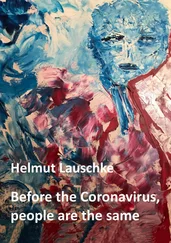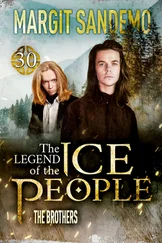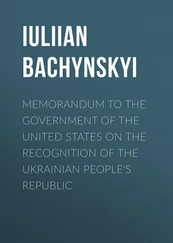“You told her about all that?” she accused Henry. “What is going on?”
Henry looked from her to me, covered his face with his hands, and took his feet off his desk. He rose, ushered her out, and shut the door.
“OK,” he began. “I’m going to tell you about this. It’s big. There’s a city beneath the streets … ”
Henry was frustrated, like many others, at the inadequate city and state efforts to deal with the underground homeless population that increased year after year. He finally took some photographs of the conditions, which he showed to me, and brought those pictures to Albany in an effort to see the governor. He was advised to keep quiet and told help would come, but it did not.
Initially The Los Angeles Times was lukewarm toward the story, probably because I was fresh out of school. Perhaps they are pulling your leg, one reporter laughed; maybe they are luring you into the tunnels where you could be raped or killed, another warned. But several other reporters, particularly Karen Tumulty, encouraged me to pursue the story, especially after I brought J.C. to the office.
J.C. was the self-described spokesman for a two hundred-member underground community under Grand Central to whom Sergeant Henry had introduced me. Karen and editor Roger Smith gave me confidence to pursue the story. My drive was also fueled by denials that the underground homeless existed—even by those who clearly knew better. After months of research, I received, anonymously, a list of officials—mental health and substance abuse specialists who met with each other several times to discuss the underground homeless situation. The story unfolded easily. I became more fascinated by the homeless I met, their warmth and friendliness, as well as the way they interacted with one another through their quick communication network. I enjoyed being recognized on the street by those I had interviewed and even those who knew me by word of mouth. One night while waiting for the D train to take me home to Brooklyn, a homeless man came up to me and suggested that I pass up the waiting train for the next one. “There’s going to be trouble” on that train, he warned me. I took his advice. Hours later while stuck on the stalled train, I learned that there had been a shooting on the previous train that I had passed up.
Immediately after my article appeared on the front page of the Times , I was deluged with calls from advocates of the homeless, some of whom were furious that I had quoted them. “It doesn’t help the homeless to be portrayed as ‘mole people’ living underground,” complained an official at New York’s largest organization for homeless people. “It makes them look freakish.” He intended to phone an editor and claim he had been misquoted by me. I asked if he intended to lie. “Sure I’d lie,” he told me without equivocation. “I’d lie to help the homeless.”
I wondered if I really had done harm. “Don’t worry about them,” Bernard Isaacs advised. A veteran tunnel dweller from the West Side, Isaacs is very critical of these groups for the homeless. “They’re as bad as the city government,” he said. “They have their agenda and we have ours. They need money to keep their jobs at their organizations. They make up the truth to support their platform so they get donations. We don’t have a platform. We need the truth.”
So I went back into the tunnels for more firsthand accounts and experiences of underground life for this book. With the help of Bernard, Sergeant Henry, and Blade, I had encounters that will last me a lifetime. If I had it to do again, I wouldn’t. The sadness and the tragedies were overwhelming, and, in the end, the danger to myself was too great to want to relive. Too many friends I made in the tunnels have died or regressed almost beyond recognition. Too few have made it back aboveground. The excitement of dangerous tunnel adventures lasts only until you get to know the people of the tunnel and understand their plight.
In describing the dangerous world of the underground homeless, I’ve sought to bring up to the reader not only their personal histories but also the sparks of friendship and caring that help light their dark world. The stories tell not only of their present lives in the tunnels and the communities they form, but also of their communication networks, and of the encounters with government agencies, charitable programs, and nonprofit advocacy groups. All, I hope, make up the larger truth about the homeless underground that those who have never approached these people will find difficult to credit, let alone comprehend in its entirety.
Finally, few of the homeless in this book are identified by their real names. This was their choice.
“We leave our pasts and our failures with our names aboveground,” explained the self-styled “mayor” of an underground Penn Station community. While they gave only their street names or invited me to invent one for them, virtually all of them wanted to talk about their lives, hoping that it would bring some understanding and perhaps help others. These people and their lives represent the worst of New York City and, I argue, the best. These are their stories.
HE’D HEARD ABOUT THE TUNNEL. SOME MONTHS EARLIER A corpse was found in it, not far beyond the tracks, its face half-eaten by rats, one eye scratched out and punctured with small teeth. The fleshless cheek swarmed with maggots and flies. They said a fat white worm, or perhaps only a maggot, crawled in the empty eye socket, while the other eye stared in unblinking horror. A veteran police officer threw up at the sight of the dead man who was just one of the homeless frequently seen but little known. He never fit into any place or plan. Even in death his body refused to be useful even to medical science. He had been dead only a few days, but his body was too decomposed to determine the cause of death. Or so they said. He might have been killed in a robbery or a drug-crazed beating or from natural causes—as natural as they come to a man of about fifty who had been living on the streets and sought a place to rest. It didn’t matter much. There was no one to cry over him or claim his body. All that was left was a burial by prison inmates at Riker’s Island in the Island cemetery, a government-issued number, and the folklorish memory of his hideous corpse circulated among the homeless.
That story about the tunnel was accepted as truth to him and the other homeless who lived in the area. Now as he enters a dark tunnel away from the tracks, he fears he is entering that corpse’s tunnel. He considers working his way back out, past the mounds of broken cinder blocks and clumps of debris and refuge, back to the dark tunnel entrance he had stumbled into in his search for solitude. A moment ago he stood at the mouth of the tunnel silhouetted in the last of the day’s red light, not yet committed to the underground. Now he finds himself enveloped in its darkness, his bravery receding with the light as he walks deeper into the tunnel. The dark is not much worse than the night in the city, he tells himself, and the danger can’t be greater here than it is for men like him on the streets.
Three nights earlier he was stabbed while being robbed by a man he had considered his best friend, just after they had shared a Meals-on-Wheels sandwich and a park bench in East Side Manhattan’s Alphabet City. Two nights ago a man tried to rape him at a city shelter where he hoped for sleep to heal his bandaged arm. Last night, as he lay curled in a doorway to stay warm, a group of young thugs kicked him in the head until blood filled his eyes. They tore the pint of cheap whiskey from his hands and poured it over him, then tried to ignite him with an iridescent yellow lighter until a woman began screaming. He could have gone to the cops, but what for? He couldn’t identify them and he wouldn’t risk fingering the wrong kids. That had happened to his brother once and it just wasn’t right.
Читать дальше












